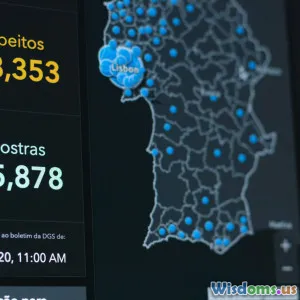
Why Kidnapping Victim Recovery Rates Vary Between Cities
9 min read Explore the factors behind varying kidnapping victim recovery rates across cities worldwide. (0 Reviews)
Why Kidnapping Victim Recovery Rates Vary Between Cities
Kidnapping is one of the most harrowing criminal acts and the anguish endured by victims, their families, and society cannot be overstated. However, when it comes to recovering those kidnapped, rates fluctuating dramatically across different cities spark a deeper investigation. Why do some urban centers report high success in rescuing victims while others struggle? Understanding these variations unveils insights into law enforcement efficacy, societal structures, and the very fabric of urban environments.
In this comprehensive article, we’ll explore the multifaceted reasons behind why kidnapping victim recovery rates vary between cities, supported by research findings, real-world case studies, and expert commentary.
The Scale and Complexity of Kidnapping
Before delving into recovery rates, it’s critical to understand the nature of kidnapping itself. Kidnapping ranges widely—from abductions for ransom, human trafficking, domestic violence-related kidnappings, to opportunistic crimes. According to the United Nations Office on Drugs and Crime (UNODC), reported cases often represent just a fraction of reality due to underreporting, which complicates recovery efforts and data analysis.
Factors Affecting Kidnapping Victim Recovery Rates
1. Law Enforcement Capacity and Expertise
One of the most crucial determinants is the capability and readiness of local law enforcement agencies.
-
Specialized Task Forces: Cities like New York have dedicated kidnapping squads equipped with high-tech forensic tools and trained negotiators. For example, the NYPD's Kidnapping Squad boasts over a 70% case resolution rate, attributed to rapid response teams and extensive coordination.
-
Training and Protocols: Some cities employ standardized protocols for immediate response, informed by psychological profiling and geographic profiling technologies. A study from the International Centre for Missing & Exploited Children (ICMEC) shows that rapid initiation of investigations within the first 48 hours increases the likelihood of victim recovery by up to 60%.
-
Resource Allocation: Contrastingly, cities with underfunded police services, such as parts of Central America or urban areas experiencing political instability, face bottlenecks in investigation capabilities.
2. Urban Infrastructure and Geography
The physical layout and infrastructure of a city deeply impact the ability to locate and recover victims.
-
Transportation Networks: Cities with dense, well-monitored transportation systems and surveillance cameras provide authorities with more tools to trace kidnappers’ movements.
-
Urban Sprawl vs. Compactness: Highly sprawling urban areas like Los Angeles complicate coordination due to their sheer area, while dense cities such as Tokyo benefit from concentrated resources and systematic surveillance.
-
Safe Zones and Hideouts: Some cities inadvertently offer more refuge due to abandoned buildings, underground networks, or border proximities. For instance, cities near porous borders like Tijuana witness longer victim disappearances due to criminals exploiting cross-border dynamics.
3. Community Engagement and Public Awareness
Public cooperation serves as a cornerstone for timely intervention.
-
Community Watch Programs: Cities with active neighborhood watch and citizen policing programs tend to have higher recovery rates. For example, Bogotá's Integrated Community Policing Program has helped increase kidnapped victim recoveries through community tips.
-
Media and Technology: Leveraging social media platforms for rapid dissemination of kidnapping alerts (e.g., New Delhi’s Amber Alert) bolsters public vigilance.
-
Cultural Attitudes: Some cultures emphasize collective responsibility, leading to prompter public reporting, whereas others with deep mistrust of authorities reduce timely information flow.
4. Socioeconomic Factors and Crime Environment
The economic environment plays an influential role in both the prevalence of kidnappings and the success of rescues.
-
Poverty and Inequality: Cities with pronounced poverty often witness higher incidences of kidnappings, frequently linked to ransom demands. Yet, overwhelmed systems in such cities struggle with lower recovery due to resource constraints. Mexico City, with socioeconomically diverse boroughs, sees mixed outcomes based on neighborhood affluence.
-
Organized Crime Presence: Strong mafia or cartel presence creates zones controlled by criminal entities where law enforcement has limited reach — decreasing victim recovery probabilities.
-
Corruption Levels: According to Transparency International, cities with elevated corruption undermine investigations. Victim families in some West African cities have reported paying bribes to progress cases.
5. Legal Framework and Interagency Collaboration
-
Legislation: Cities benefiting from modern, victim-centered legal frameworks enable swifter investigative actions and protective measures.
-
Inter-jurisdictional Cooperation: Kidnappings often cross city or state lines, requiring seamless coordination. European cities with EU’s law enforcement collaboration structures, such as Europol, advantageously share intelligence.
Case Study: Comparing Recovery Rates
New York City vs. Rio de Janeiro
-
NYC: With an estimated recovery rate of over 60% for abducted minors, the city’s investment in task forces, combined with public alert systems and a robust legal framework, has yielded tangible results.
-
Rio de Janeiro: Despite large police investment, factors such as favelas' complex terrains and organized gangs depress success rates to under 30%, reflecting infrastructural and governance hurdles.
Expert Insights
Dr. Helena Moritz, Criminologist at Urban Safety Institute, notes, “Recovery rates hinge not only on law enforcement but on societal trust and interagency fluidity. Cities fostering public cooperation and intel-sharing see markedly better outcomes.”
Steps Cities Can Take to Improve Recovery Rates
- Enhance rapid response capabilities through technology and training
- Invest in community-police partnerships to cultivate information sharing
- Develop infrastructure with public safety in mind, such as expanded surveillance where privacy standards allow
- Strengthen legal and anti-corruption frameworks to expedite investigations
- Promote cross-jurisdictional collaboration for cases that cross borders
Conclusion
Kidnapping victim recovery rates are intricately tied to a city’s law enforcement strength, urban form, societal dynamics, economic realities, and governance structures. While no single factor dictates outcomes, the interplay between these creates distinct environments in which recovering victims becomes either attainable or a daunting challenge.
By delving into these complexities, stakeholders—ranging from policymakers and law enforcement to citizens—can better understand vulnerabilities and strengths, driving progress toward safer urban landscapes where kidnapping victims stand a greater chance of safe return. Awareness and action tailored to local nuances remain paramount in combating this acute social crisis.
References:
- United Nations Office on Drugs and Crime (UNODC), Global Report on Kidnapping, 2020.
- International Centre for Missing & Exploited Children (ICMEC) Research Brief, 2022.
- Transparency International, Corruption Perceptions Index, 2023.
- NYPD Official Statistics, 2023.
- Interviews with Dr. Helena Moritz, Urban Safety Institute.
Rate the Post
User Reviews
Popular Posts


















